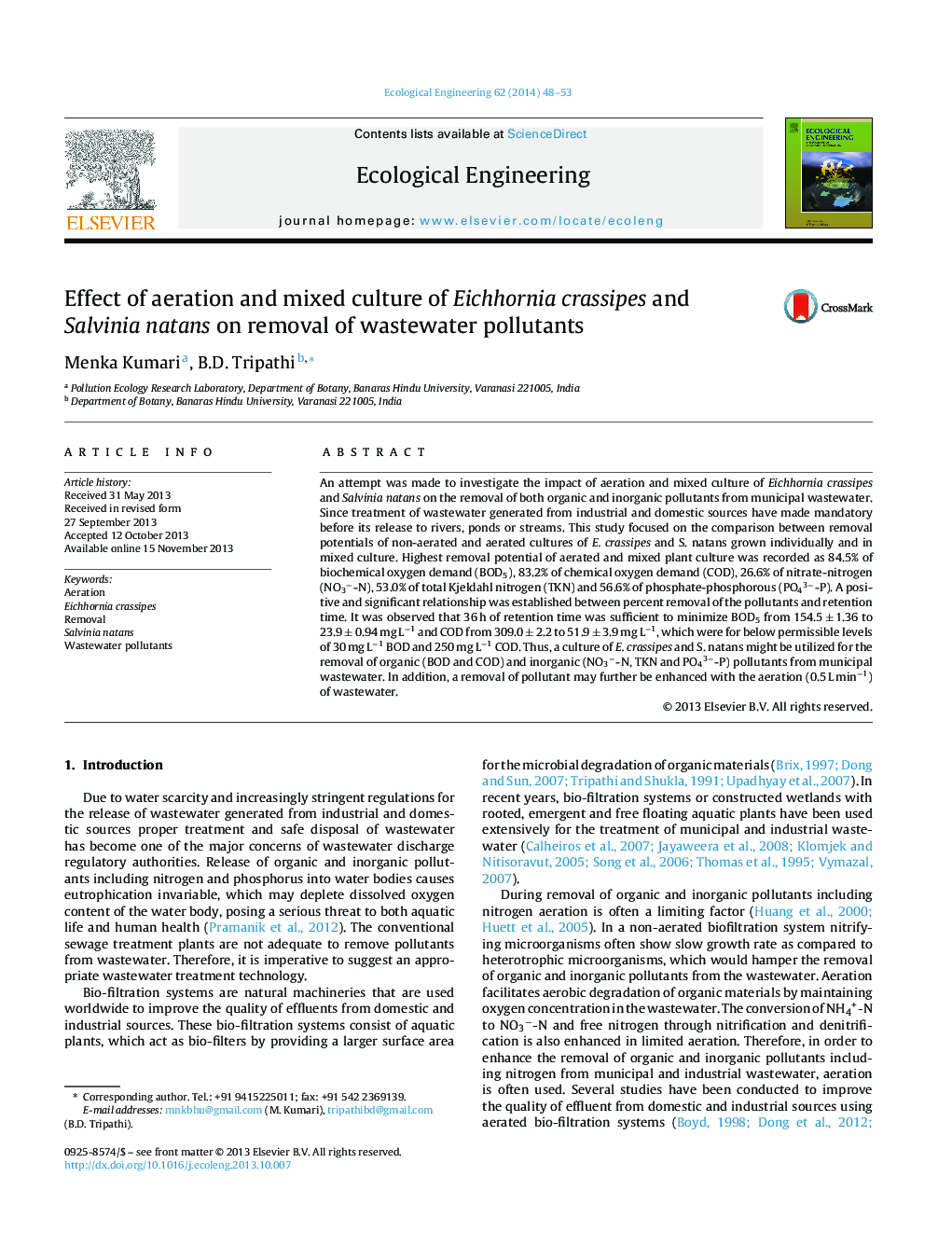| Article ID | Journal | Published Year | Pages | File Type |
|---|---|---|---|---|
| 6302242 | Ecological Engineering | 2014 | 6 Pages |
Abstract
An attempt was made to investigate the impact of aeration and mixed culture of Eichhornia crassipes and Salvinia natans on the removal of both organic and inorganic pollutants from municipal wastewater. Since treatment of wastewater generated from industrial and domestic sources have made mandatory before its release to rivers, ponds or streams. This study focused on the comparison between removal potentials of non-aerated and aerated cultures of E. crassipes and S. natans grown individually and in mixed culture. Highest removal potential of aerated and mixed plant culture was recorded as 84.5% of biochemical oxygen demand (BOD5), 83.2% of chemical oxygen demand (COD), 26.6% of nitrate-nitrogen (NO3â-N), 53.0% of total Kjeldahl nitrogen (TKN) and 56.6% of phosphate-phosphorous (PO43â-P). A positive and significant relationship was established between percent removal of the pollutants and retention time. It was observed that 36 h of retention time was sufficient to minimize BOD5 from 154.5 ± 1.36 to 23.9 ± 0.94 mg Lâ1 and COD from 309.0 ± 2.2 to 51.9 ± 3.9 mg Lâ1, which were for below permissible levels of 30 mg Lâ1 BOD and 250 mg Lâ1 COD. Thus, a culture of E. crassipes and S. natans might be utilized for the removal of organic (BOD and COD) and inorganic (NO3â-N, TKN and PO43â-P) pollutants from municipal wastewater. In addition, a removal of pollutant may further be enhanced with the aeration (0.5 L minâ1) of wastewater.
Related Topics
Life Sciences
Agricultural and Biological Sciences
Ecology, Evolution, Behavior and Systematics
Authors
Menka Kumari, B.D. Tripathi,
